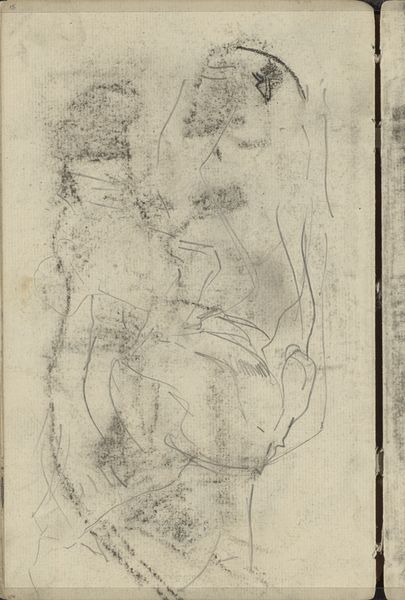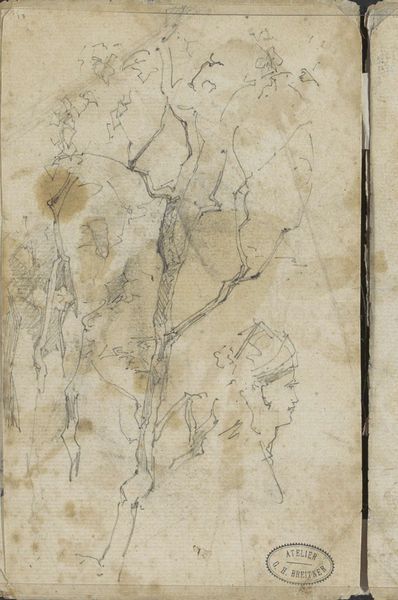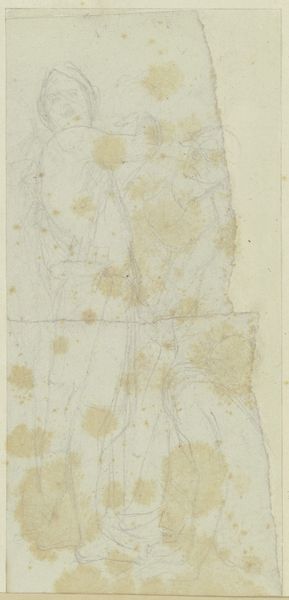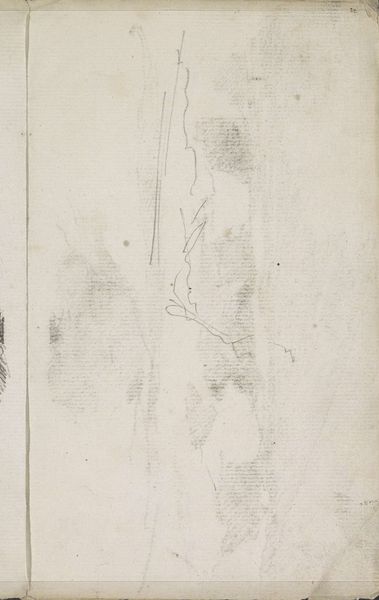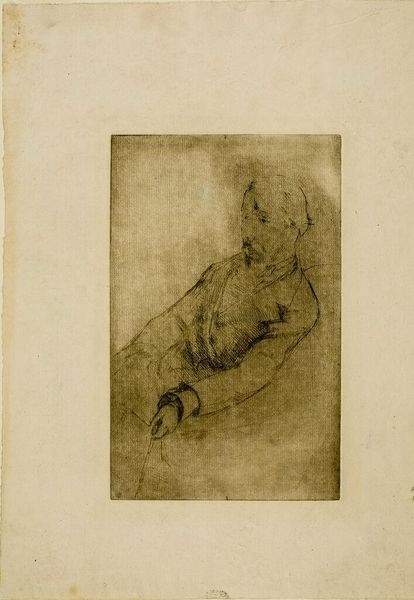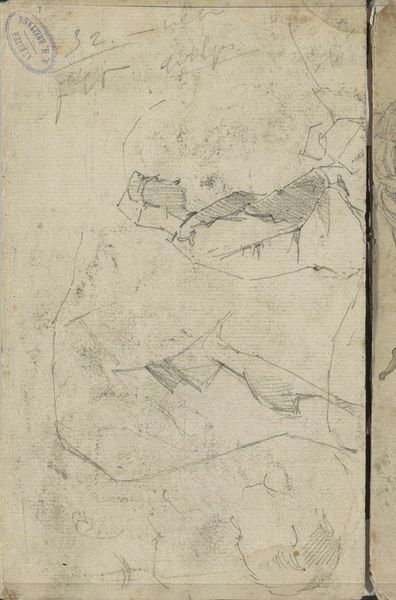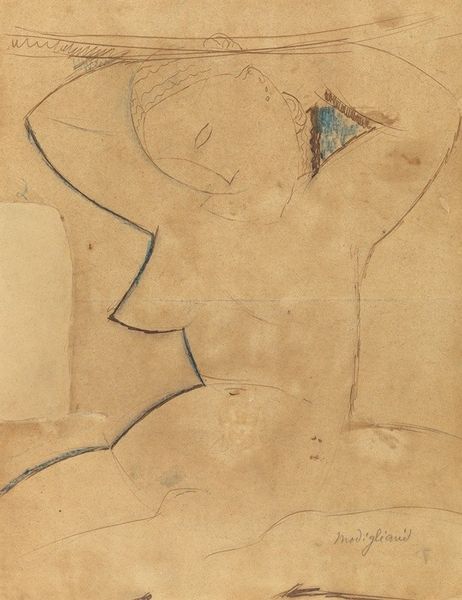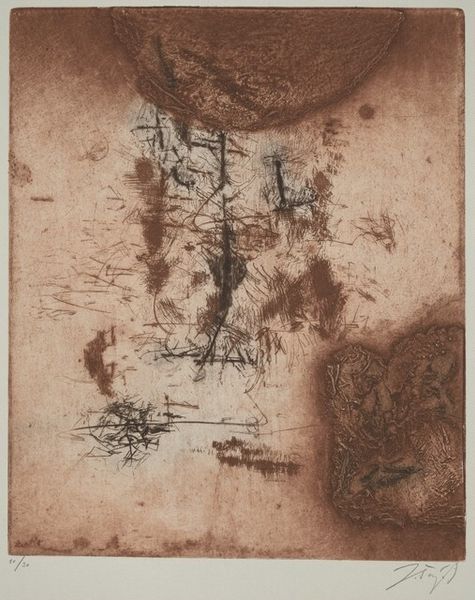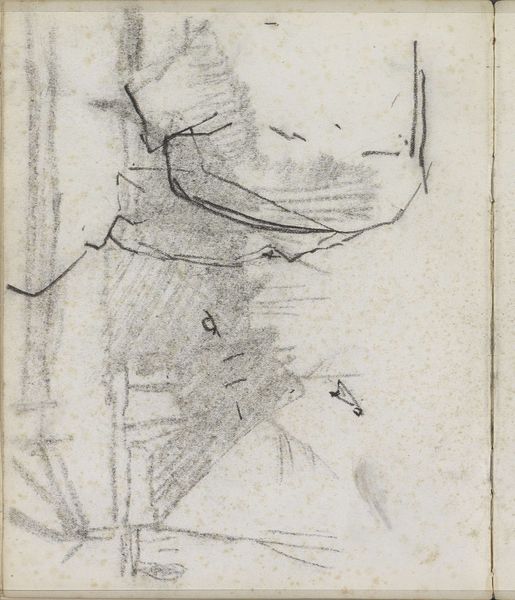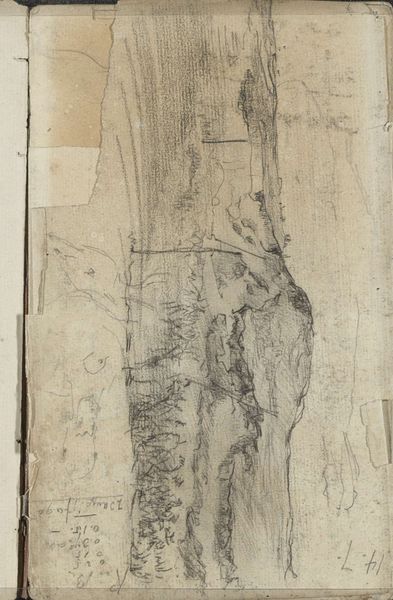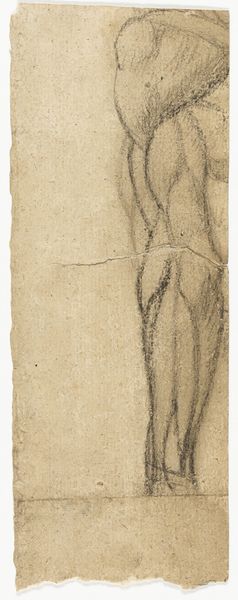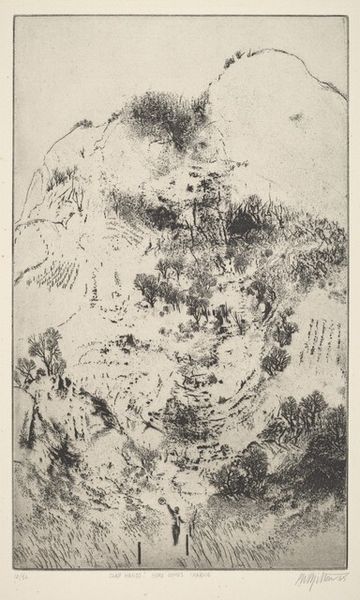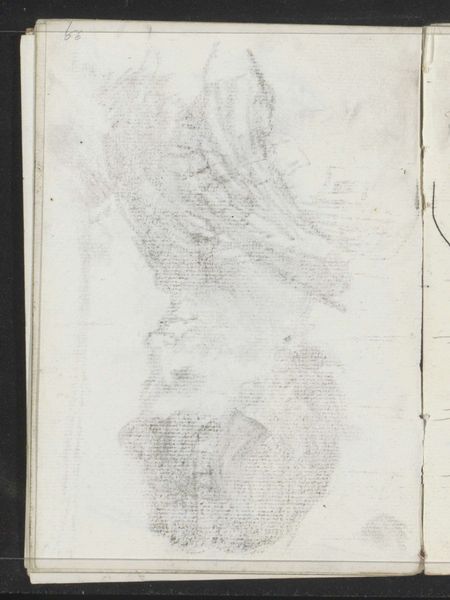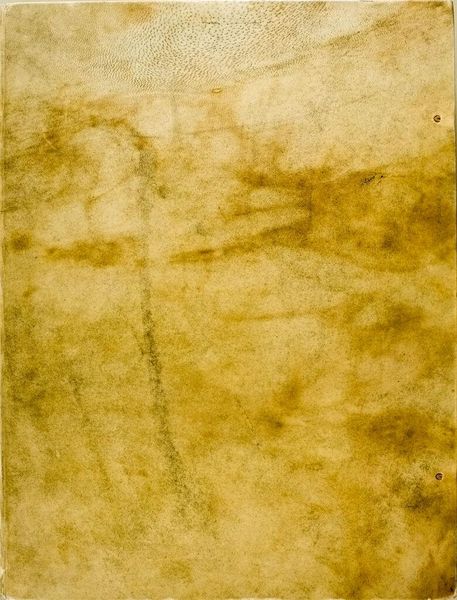
drawing, print, etching, paper, charcoal
#
portrait
#
drawing
# print
#
etching
#
pencil sketch
#
charcoal drawing
#
paper
#
expressionism
#
charcoal
Copyright: Public Domain: Artvee
Editor: So, here we have Ernst Ludwig Kirchner's "Old Woman with Cat," created around 1922, using etching and charcoal on paper. It's remarkably detailed, but carries a certain melancholy. How do you interpret this work? Curator: Kirchner offers us an intimate scene laden with symbolic weight. Consider the cat—in many cultures, it’s a symbol of independence, mystery, even the feminine divine. Notice how both figures, woman and cat, are enclosed, almost shrouded. What might that signify? Editor: Perhaps isolation or a desire for protection? I also notice the sharp, angular lines. Curator: Precisely! Those harsh lines, characteristic of Expressionism, create a sense of unease. Think of Expressionism as a movement obsessed with inner emotional landscapes. The lines could be interpreted as external manifestations of inner turmoil. Do you see how the woman’s downcast gaze emphasizes vulnerability? Editor: Yes, definitely. And the way the cat is curled up, seeking comfort...it's like they are mirroring each other. Curator: The doubling is powerful. Consider how frequently the ‘crone’ and a familiar—often a cat—appear together in folklore. Do you believe that relationship persists into modern anxieties about women in the 20th century? Editor: I hadn't considered that angle before. I'd always thought of Kirchner's work as more about personal torment than wider cultural anxieties. Curator: It's both, I think. Art reflects both the individual and the collective. Looking at this piece reminds me that symbolism isn’t static; it shifts and evolves, accruing new layers of meaning across time. What will these figures mean in one hundred more years? Editor: This has opened up so many avenues of interpretation I wouldn’t have thought of on my own. Thank you!
Comments
No comments
Be the first to comment and join the conversation on the ultimate creative platform.
